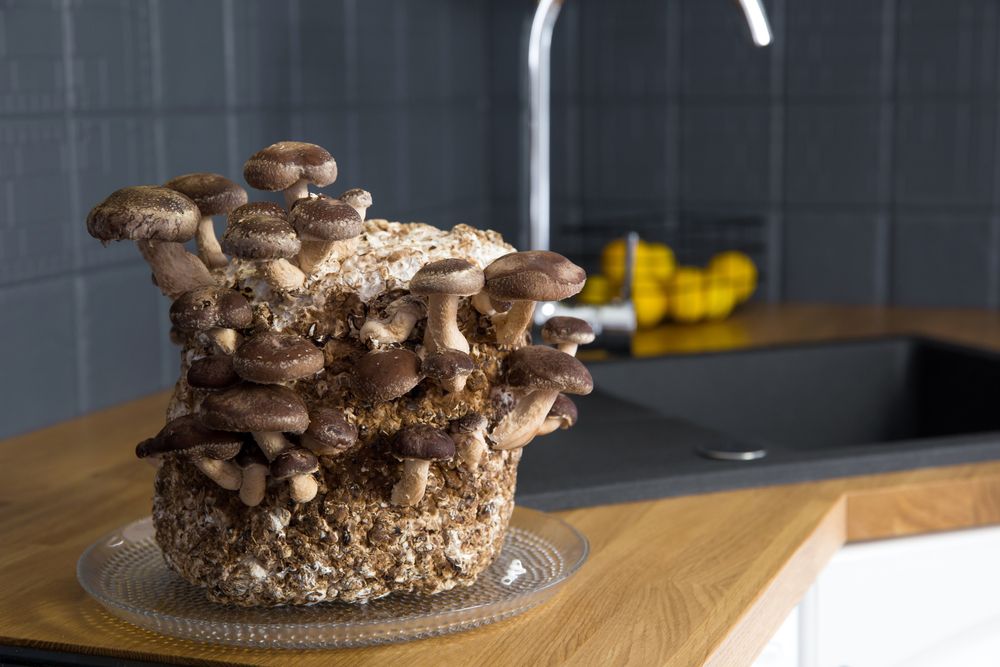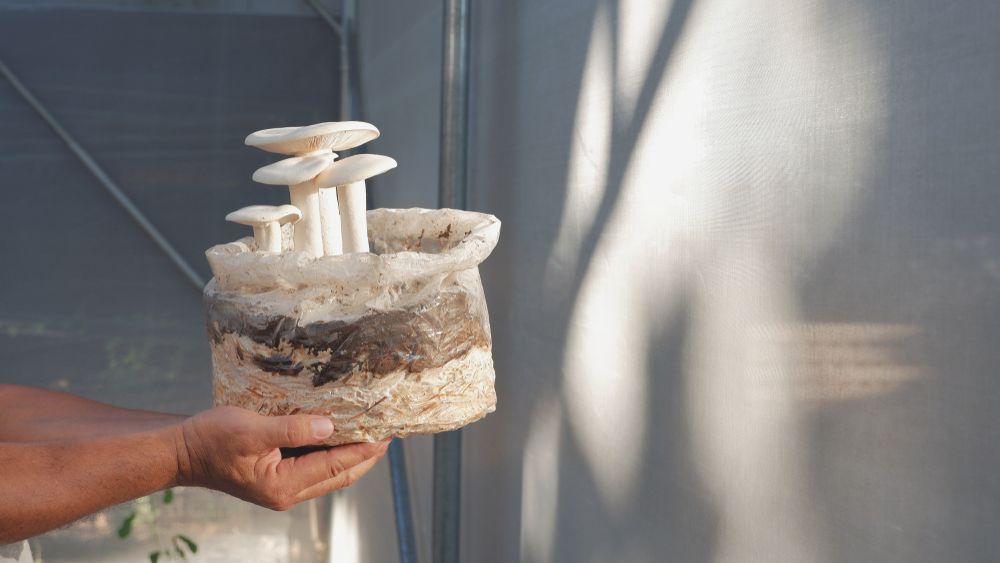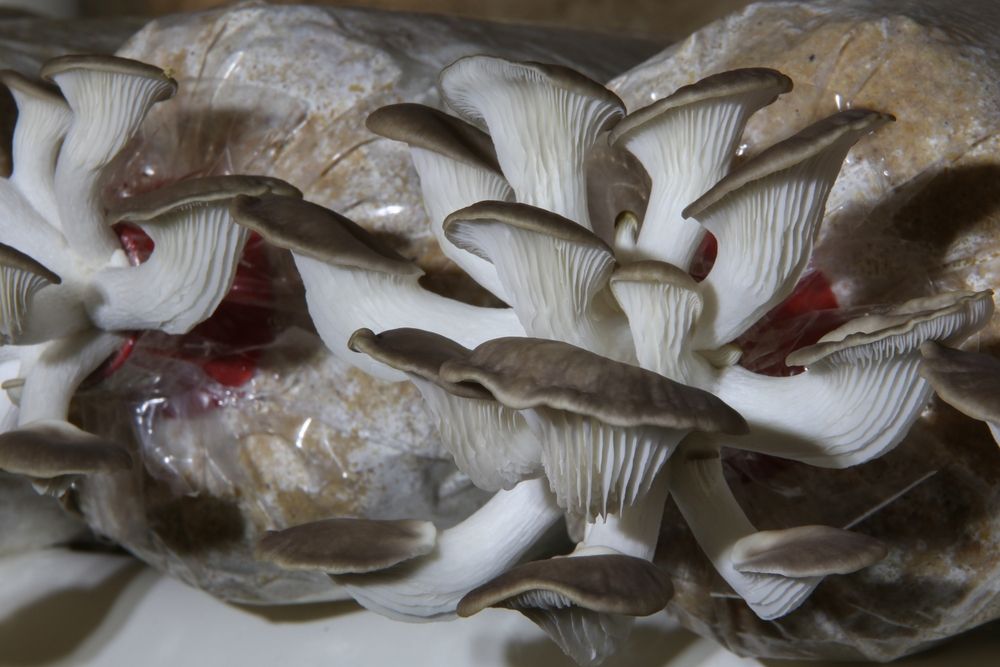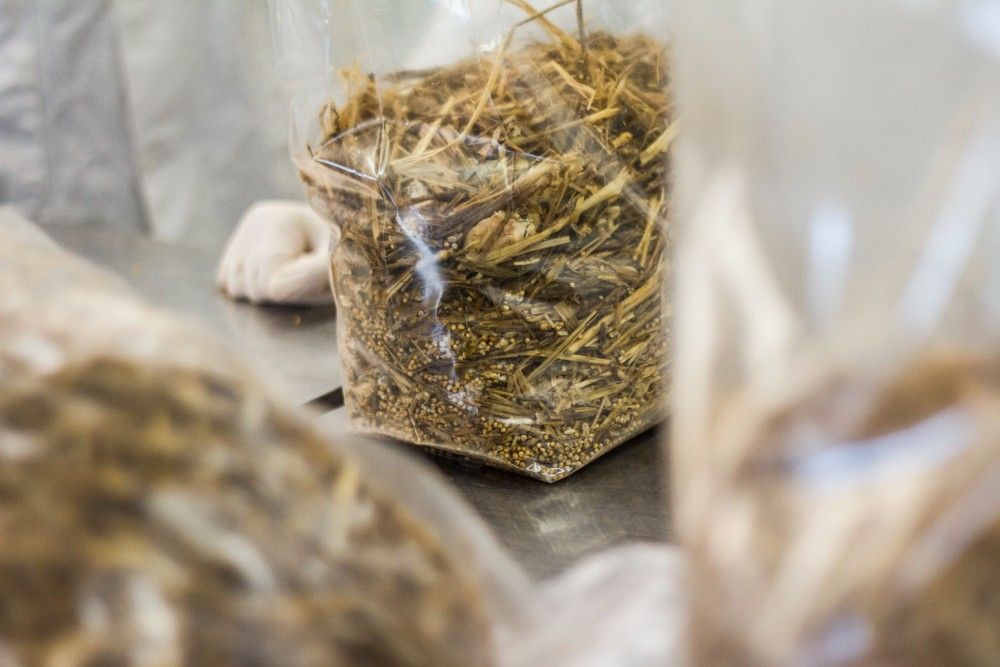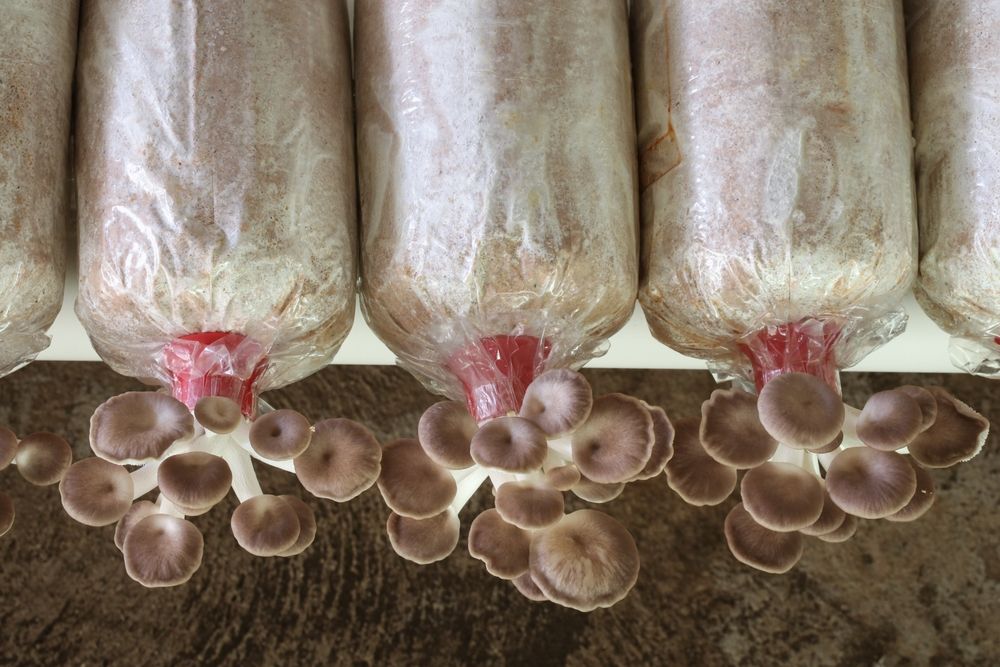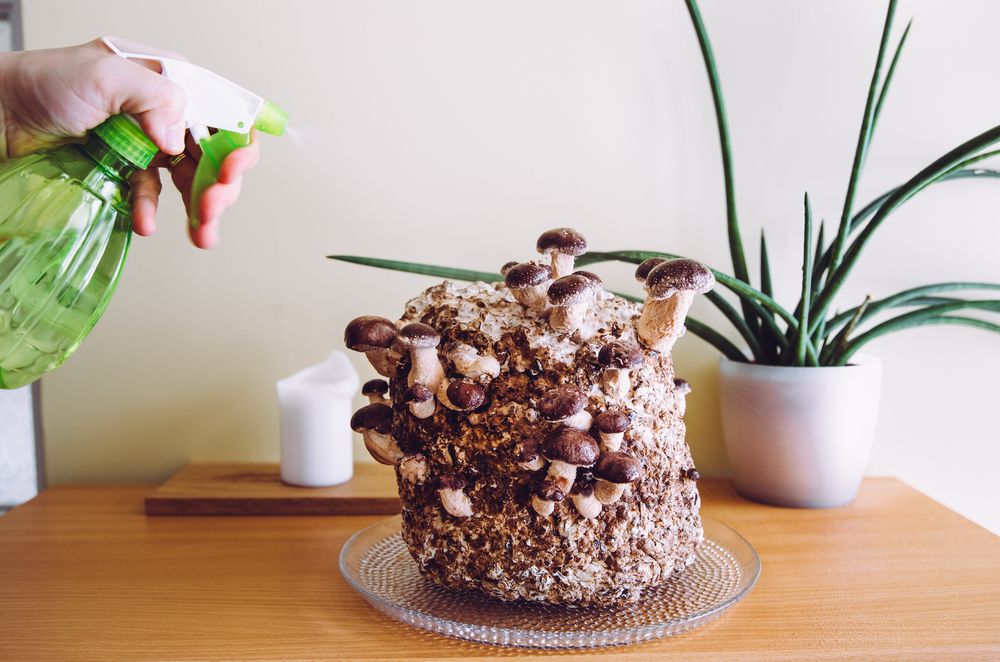With different opportunities available, gardening does not have to stop once the cold comes knocking! One such gardening opportunity in the wintertime is growing mushrooms in bags, although this can take place throughout the year as well.
Mushrooms are known to have anti-inflammatory, antioxidant, and anti-cancer effects. Their full of vitamins B and D, phosphorous, copper, and selenium -- It's no wonder gardeners enjoy growing these fungi! If you have decided to grow your mushrooms in bags at home, here are a few tips and tricks to help you succeed.
How Do Mushrooms Grow in a Bag?
Image credits: FotoHelin via Shutterstock
Growing mushrooms in a bag is a great way to always have a fresh harvest at hand. You can either opt to do the process from scratch or through a mushroom kit with everything already set up.
The general process of mushroom growth is a three-step procedure. First, mushrooms grow from spores, not seeds. Spores inoculate grains or seeds to produce mycelia (spawn). The mycelia are the mushroom's "seeds"!
The next step is to introduce the mycelia to the substrate of choice. The substrate is where the mycelia will get all the nutrients from, along with water provided by the grower. Eventually, with proper watering, mushrooms will start to grow through the substrate. This process can take from two weeks up to two months.
5 Tips for Growing Mushrooms in a Bag
While other methods exist for growing mushrooms at home (such as on logs), using a bag is the easiest way to start your mushroom garden. Here are tips to consider when beginning this process.
Starting Point
Image credits: Prapat Aowsakorn via Shutterstock
There are three ways to start your mushroom-growing journey, and the easiest of the three is by purchasing a mushroom-growing kit. For this method, you make a slit in the bag, add water, and that will start the mushroom growth! It is a great method for beginners since it keeps things simple.
Secondly, you can purchase pre-grown spawns. When starting with this approach, create your bag environment by choosing a suitable substrate and introducing the spawn to that material. It allows you to pick your substrate (straw, sawdust, newspaper, cardboard, etc.) and be a bit more hands-on.
Lastly, you can start your mushroom-growing journey from scratch. With this method, collect spores and mature them into spawns. Once you do that, you create the bagged environment by choosing a substrate and introducing the spawn. While this procedure requires more patience and care, it is rewarding and allows you to be part of the process right from the start.
Mushroom Species
Image credits: Various images via Shutterstock
When growing mushrooms at home, remember that not all species are equal. Some may be more difficult, with many specifications, while others are easier to grow depending on where you live. Other considerations may include the species available to you, the health benefits, or the taste profile. When it comes to growing mushrooms in bags, shiitake and oyster mushrooms are great.
Whichever species you select, give yourself the best chance for success by making these considerations before selecting your mushrooms.
Substrates
Image credits: FotoMediamatic via Creative Commons
The substrate for growing mushrooms is what soil is for growing plants. The materials you can use as substrate vary, including sawdust, compost, or straw. When growing mushrooms in bags, choose a readily available substrate that works well with the species you have selected. For example, Oyster mushrooms grow well on pasteurized straw.
Also, consider what type of tree the sawdust is from. While trees like oak, maple, and birch work very well with growing mushrooms, others such as cedar, redwood, and pine, may resist or completely inhibit the growing process.
Location
Image credits: Various images via Shutterstock
Location is very important when finding success with homegrown mushrooms. If growing mushrooms from scratch, the spore-to-spawn step will need a place with a temperature of around 68 to 77 degrees Fahrenheit. Light is necessary for this step in the process.
Once the spawn is in the bag of the required substrate, it is ready to incubate. Set the temperature from 65 to 70 degrees Fahrenheit for about four to eight weeks.
Then, it's the fruiting time! At this point, the best place to grow them is in a cool, dark, and moist spot, such as a basement. Ensure the temperature stays within the desired range, and watch out for drafts that may cause drastic temperature shifts.
Watering
Image credits: FotoHelin via Shutterstock
Did you know mushrooms are 90 percent water? Thus, watering is a very crucial part of their growth. If you have a kit, ensure you follow the initial watering instructions. When your mushrooms are in the fruiting stage, keeping the humidity up is extremely important.
Either use a humidifier or water around the bag. Avoid watering right onto the substrate, as standing water can attract disease. Mist several times a day to keep the humidity up if necessary.
Grow Your Own Fun-Guys!
Growing your mushrooms is great for the harvest and health benefits they provide and allows for year-round gardening! Whether you opt for a pre-made kit to help you ease into mushroom growing or you decide to be part of the process from the beginning, considering these tips will help you find success!
Do you grow your mushrooms in bags? Share your tips or tricks in the comment section below!


